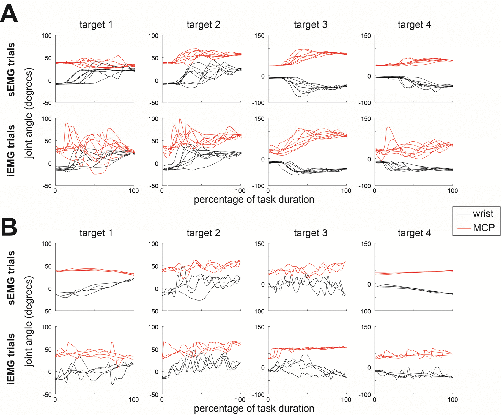
Simultaneous and proportional control (SPC) of neural-machine interfaces uses magnitudes of smoothed electromyograms (EMG) as control inputs. Though surface EMG (sEMG) electrodes are common for clinical neural-machine interfaces, intramuscular EMG (iEMG) electrodes may be indicated in some circumstances (e.g., for controlling many degrees of freedom). However, differences in signal characteristics between sEMG and iEMG may influence SPC performance. We conducted a pilot study to determine the effect of electrode type (sEMG and iEMG) on real-time task performance with SPC based on a novel 2-degree-of-freedom EMG-driven musculoskeletal model of the wrist and hand. Four able-bodied subjects and one transradial amputee performed a virtual posture matching task with either sEMG or iEMG. There was a trend of better task performance with sEMG than iEMG for both able-bodied and amputee subjects, though the difference was not statistically significant. Thus, while iEMG may permit targeted recording of EMG, its signal characteristics may not be as ideal for SPC as those of sEMG. The tradeoff between recording specificity and signal characteristics is an important consideration for development and clinical implementation of SPC for neural-machine interfaces.

